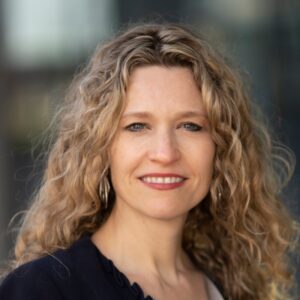
As co-founder of Women in Architecture, Whynde Kuehn has been a driving force in the success of WIA, single-handedly bringing new members and partners to the organization. Given that, there’s no better place to start with our WIA Leadership Spotlight than Kuehn, who is Founder and Managing Director of S2E Transformation Inc., “a global business consulting practice devoted to connecting strategy to execution at the enterprise level—built on a foundation of business architecture.”
Spotlight than Kuehn, who is Founder and Managing Director of S2E Transformation Inc., “a global business consulting practice devoted to connecting strategy to execution at the enterprise level—built on a foundation of business architecture.”
Question: What inspired you to become a part of WIA’s leadership?
Answer: I am a co-founder of WIA and that is a great honor. The original statistic that inspired me to help establish and lead WIA, was that only around 10% of enterprise architect roles are performed by women.[1] This figure, while reflective of my own experiences, became much more impactful and real when I saw it quantified.
I also felt that there was a powerful correspondence between the women in architecture movement and a necessary evolution in the architecture role and profession. In today’s complex, interconnected, and digital world, architecture requires a broader spectrum of ideas, perspectives, approaches, talents, and experiences to thrive. In addition, for future architects to thrive, it’s not enough to excel at cognitive, architectural, and technical competencies, but just as important to master the human competencies such as communication, influence, leadership, and emotional intelligence. Greater diversity in architecture can also help to unite the profession and enable it to connect with a much broader set of stakeholders to deliver business value.
Q: What does WIA’s vision mean to you personally?
A: One of my deepest held beliefs is that every person deserves basic rights, equality, and the freedom to choose their life’s path. I have acted upon these beliefs through work with non-profit organizations and social enterprises with efforts in education, media and citizen engagement, and women’s health. However, WIA gave me an opportunity to act on these beliefs within my own profession.
In addition, WIA’s vision is deeply meaningful to me as it aligns with my journey and the support I received to reach this point in my career. It represents a chance to give back, lift others to their greatest potential, and build a new generation of architects that can address the demands of our evolving world. I see this vision as a way to foster a more diverse, inclusive, resilient, and capable architecture community that can fully harness the strength of diverse ideas and experiences for the benefit of organizations and society as a whole.
Q: How do you see your role contributing to the future of women in architecture?
A: In my role, I am committed to helping women in architecture thrive today while creating pathways for more women in architecture in the future. A key part of this is creating space for new conversations around diversity in architecture and building awareness and momentum to drive action and change. I actively support women in the field and work to incorporate diversity into everything I do, from mentorship to hiring to event planning.
However, to achieve the future we want for architecture tomorrow, we need to invest in building it today. I am tremendously passionate about making concrete interventions with universities, schools, and other institutions to inspire and educate young people to pursue this impactful and rewarding profession that is at the forefront of designing our organizations and societies, and creating a clear and attainable career pathway for future architects to follow.
[1] Based on the data here: https://www.zippia.com/enterprise-architect-jobs/demographics/#gender-statistic indicating that 12.3% of enterprise architect roles are performed by women. While limited, we still believe that the data is directionally accurate and generally indicative of the gender gap across all domains of enterprise architecture worldwide. For example, this same source states that women comprise 28.5% of business architects, 6.2% of software architects and 18.8% of data architects.
